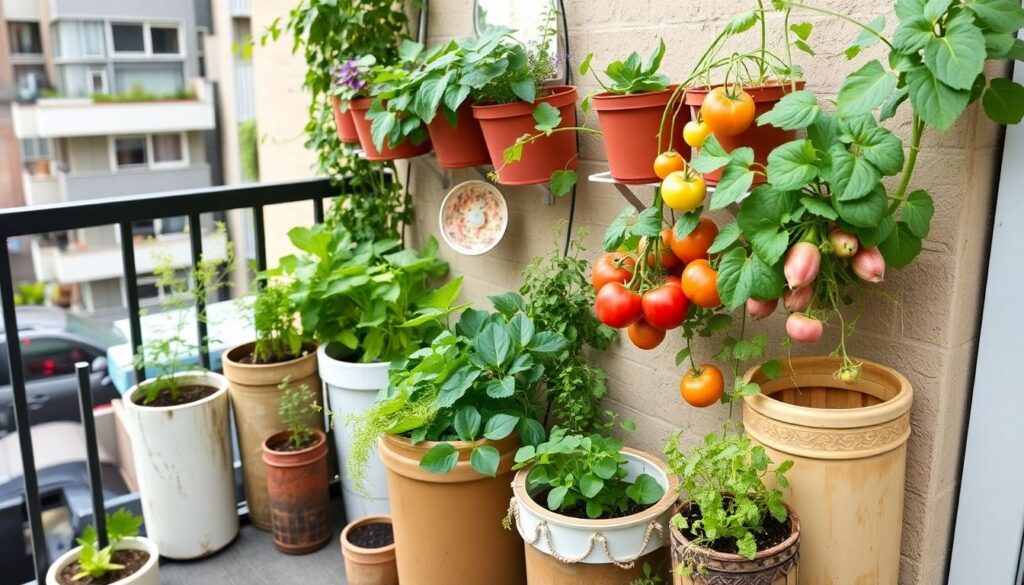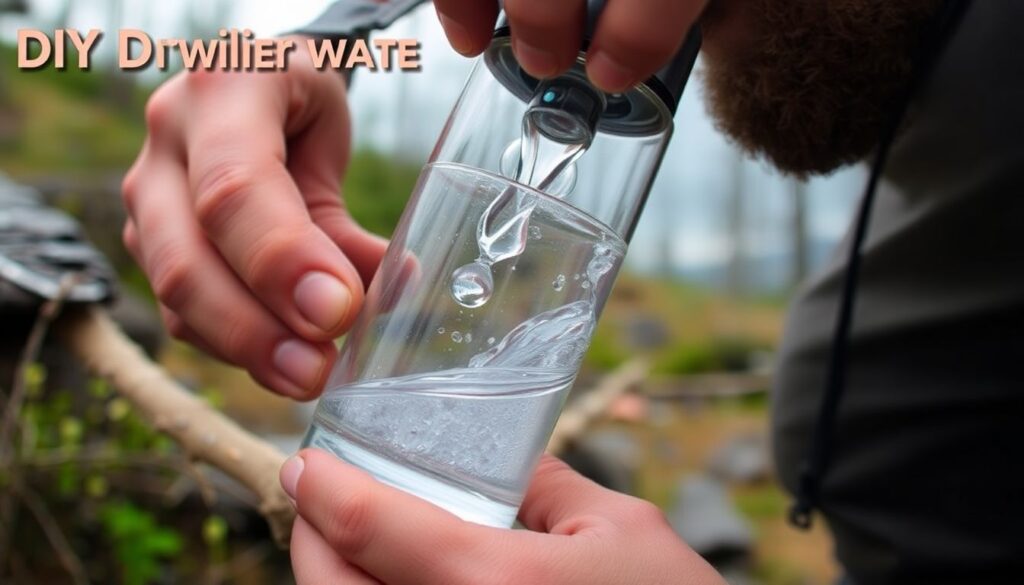Have you ever wondered what it would take to become truly self-sufficient, to grow your own food and break free from the supermarket cycle? Or perhaps you’ve found yourself worrying about the security of your food supply in uncertain times? Welcome to the world of survival gardening, where the power to produce your own food lies in your hands, no matter how small or large your space may be. In this comprehensive guide, we’re going to delve into the fascinating and rewarding world of growing your own food, exploring the art of survival gardening and its many benefits.Did you know that a well-managed 1,000 square foot garden can produce up to 500 pounds of food per year? That’s enough to feed a family of four, and it’s just the beginning of what’s possible with the right knowledge and techniques. But what if you don’t have a sprawling backyard? Fear not, for survival gardening is all about making the most of what you’ve got, whether it’s a balcony, a windowsill, or a tiny plot of land. In fact, some of the most productive gardens in the world are grown in the most unexpected spaces.So, let’s agree that everyone deserves the satisfaction and security of growing their own food, regardless of their circumstances. We promise to provide you with a wealth of practical information, from choosing the right plants to maximizing your space, all while keeping it engaging and accessible. And here’s a sneak peek of what’s to come: we’ll explore the concept of ‘square foot gardening’, the power of vertical growing, and the art of succession planting. We’ll also delve into the world of permaculture, hydroponics, and aquaponics, showing you that there’s a survival gardening solution for every space and every lifestyle.But why stop at survival? Growing your own food is a journey that connects you with nature, improves your health, and even saves you money. It’s a journey that starts with a single seed and grows into a lifestyle of self-sufficiency and sustainability. So, are you ready to take control of your food supply, to grow your own food, and to embrace the joy and satisfaction of survival gardening? Then read on, dear gardener, for we have a world of green delights to explore together.
Mastering Food Production for a Sustainable Lifestyle
Embarking on a journey towards sustainability often begins at our dinner tables. Mastering food production is not just about growing your own vegetables or raising chickens, but about understanding the intricate dance between our plates and the planet. It’s about learning to cultivate a garden that’s as diverse as the dishes you cook, where each plant plays a role in supporting the next, much like a well-orchestrated symphony. It’s about discovering the joy of composting, turning kitchen scraps into nutrient-rich soil that can feed your plants and sequester carbon, all while reducing waste. It’s about exploring the art of fermentation, harnessing the power of microorganisms to preserve food and create unique flavors, while also supporting your gut health. It’s about embracing the seasons, celebrating the bounty of summer and the comfort of winter root vegetables, and learning to preserve the excess for leaner times. It’s about understanding the importance of biodiversity, not just in our gardens, but also on our plates, and exploring the culinary delights of underutilized crops. It’s about connecting with your local community, supporting farmers who share your values, and perhaps even bartering some of your homegrown produce for their surplus. Mastering food production is about more than just growing food; it’s about cultivating a lifestyle that’s in harmony with nature, one that’s sustainable, resilient, and delicious.
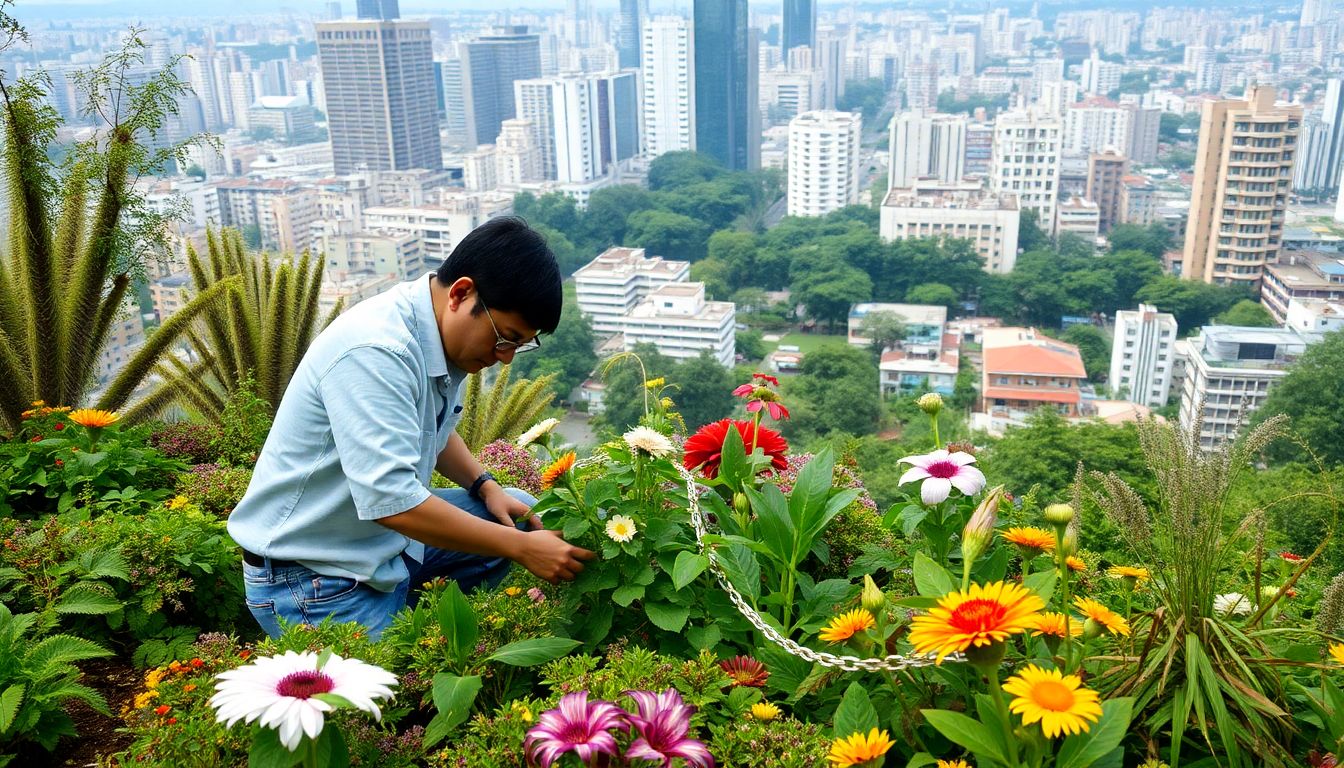
The Philosophy of Survival Gardening
In the ever-evolving tapestry of human history, the concept of survival gardening has emerged as a testament to our innate desire for self-sufficiency and resilience. Rooted in the past, this practice has been a lifeline for countless communities, from the ancient Romans who cultivated vegetables in their city gardens to the Victory Gardens of World War II, where civilians turned their lawns into food sources. Today, survival gardening is not just a necessity born out of crisis but a conscious choice driven by a myriad of benefits.
The environmental advantages are compelling. By growing your own food, you reduce your carbon footprint, as produce doesn’t need to be transported from afar. Moreover, you’re promoting biodiversity by creating habitats for pollinators and other beneficial creatures. Economically, survival gardening can be a smart investment. While the initial setup may require some capital, the long-term savings on grocery bills can be significant. Plus, you’re less vulnerable to inflation and market fluctuations.
But perhaps the most profound benefits are personal. Survival gardening is a journey of self-discovery, a chance to reconnect with nature and our ancestors. It’s a tangible way to ensure food security for you and your loved ones. It’s also a rewarding hobby that fosters patience, mindfulness, and a deep sense of accomplishment. Whether you’re a seasoned green thumb or a curious beginner, embracing the philosophy of survival gardening is a step towards a more sustainable, secure, and fulfilling life.
So, how does one start this journey? Here are some steps:
- Assess your space
- Determine what you can grow based on the size and sunlight conditions of your plot.
- Choose your crops
- Opt for varieties that are easy to grow, have high yields, and are nutritious. Consider crops that can be preserved for later use.
- Prepare your soil
- Healthy soil is the foundation of a productive garden. Test your soil’s pH and nutrient levels, and amend as necessary.
- Plant and maintain
- Follow planting instructions, water regularly, and protect your plants from pests and diseases.
- Preserve and store
- Learn how to can, freeze, or ferment your harvest to enjoy it year-round.
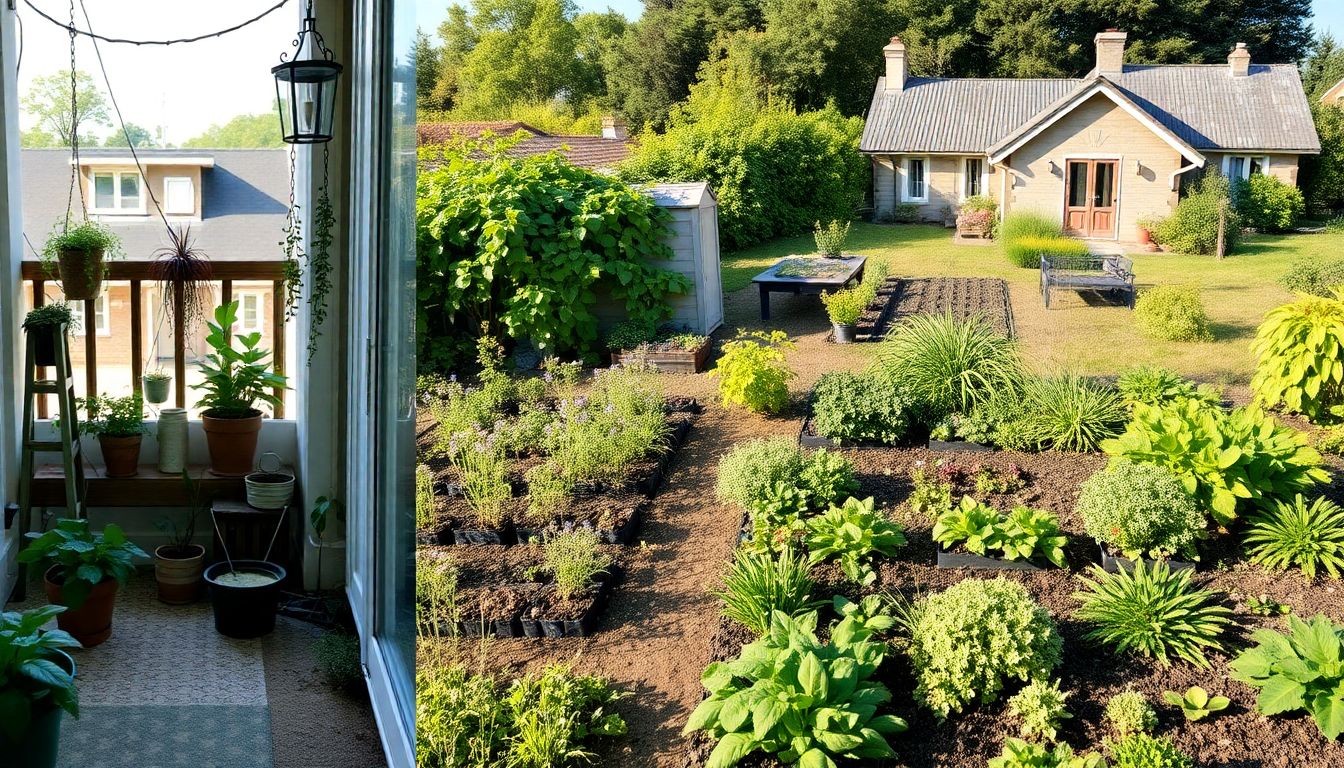
Assessing Your Space: Urban to Rural
When it comes to survival gardening, the space you have to work with can greatly influence your approach. Let’s explore the diverse landscapes of urban to rural spaces and the unique challenges and opportunities they present.
In the heart of the city, urban apartments often come with limited square footage. However, don’t let that deter you! Vertical gardening is your friend here. Utilize walls, windows, and even your balcony to grow herbs, vegetables, and even small fruit trees. The challenge lies in light availability, so choose plants that thrive in lower light conditions and ensure your space gets at least a few hours of sunlight daily.
Now, let’s move to the suburbs. Here, you might have a bit more space, perhaps a small backyard. This opens up opportunities for raised beds, container gardening, and even a small greenhouse. However, be mindful of local regulations and homeowner association rules. Also, consider the soil quality; it might need some improvement with compost or other organic matter.
Finally, we reach the rural homesteads. Here, the sky’s the limit, quite literally! You have ample space for a large garden, orchard, and even livestock. The challenge, however, is the initial setup. You might need to clear land, improve soil, and establish infrastructure like fencing and water systems. But once set up, rural homesteads offer the most flexibility and self-sufficiency.
In all these spaces, consider the climate, local pests, and diseases. Rotate your crops, practice companion planting, and use organic methods to keep your garden healthy and productive. Whether you’re growing in a window box or a sprawling field, every bit of green helps in survival gardening.

Choosing the Right Plants for Your Garden
Embarking on a gardening journey is an exciting adventure that begins with selecting the right plants for your garden. The first step in this process is understanding your climate and the specific conditions of your garden space. Different plants thrive in various environments, so it’s crucial to choose ones that are well-suited to your area’s temperature, sunlight, and rainfall patterns. This will not only ensure your plants grow healthy and strong but also save you time and effort in the long run.
Once you’ve determined your climate zone, it’s time to consider the size and layout of your garden. Are you working with a sprawling backyard or a compact balcony? Plants come in all shapes and sizes, so it’s essential to choose ones that fit your space perfectly. For instance, if you’re working with limited space, consider vertical gardening or plants that grow well in containers.
When selecting plants, it’s also wise to consider their maintenance needs. If you’re a busy bee with little time for gardening, opt for high-yield, low-maintenance crops. These include hardy vegetables like potatoes, beans, and peas, as well as low-maintenance flowers like marigolds and petunias. They require minimal care but yield abundant harvests or vibrant blooms.
Diversity is key when it comes to plant selection. Mixing different types of plants not only creates a visually appealing garden but also promotes biodiversity. This encourages a healthy ecosystem, attracting beneficial insects and birds, and deterring pests. Moreover, diverse plants provide a variety of colors, textures, and heights, adding depth and interest to your garden.
Lastly, don’t forget to consider the purpose of your garden. Are you growing vegetables for your kitchen table, or are you creating a serene space for relaxation? The plants you choose should reflect your garden’s purpose. Whether you’re growing food, attracting wildlife, or simply creating a beautiful space, choosing the right plants is the first step towards your gardening goals.
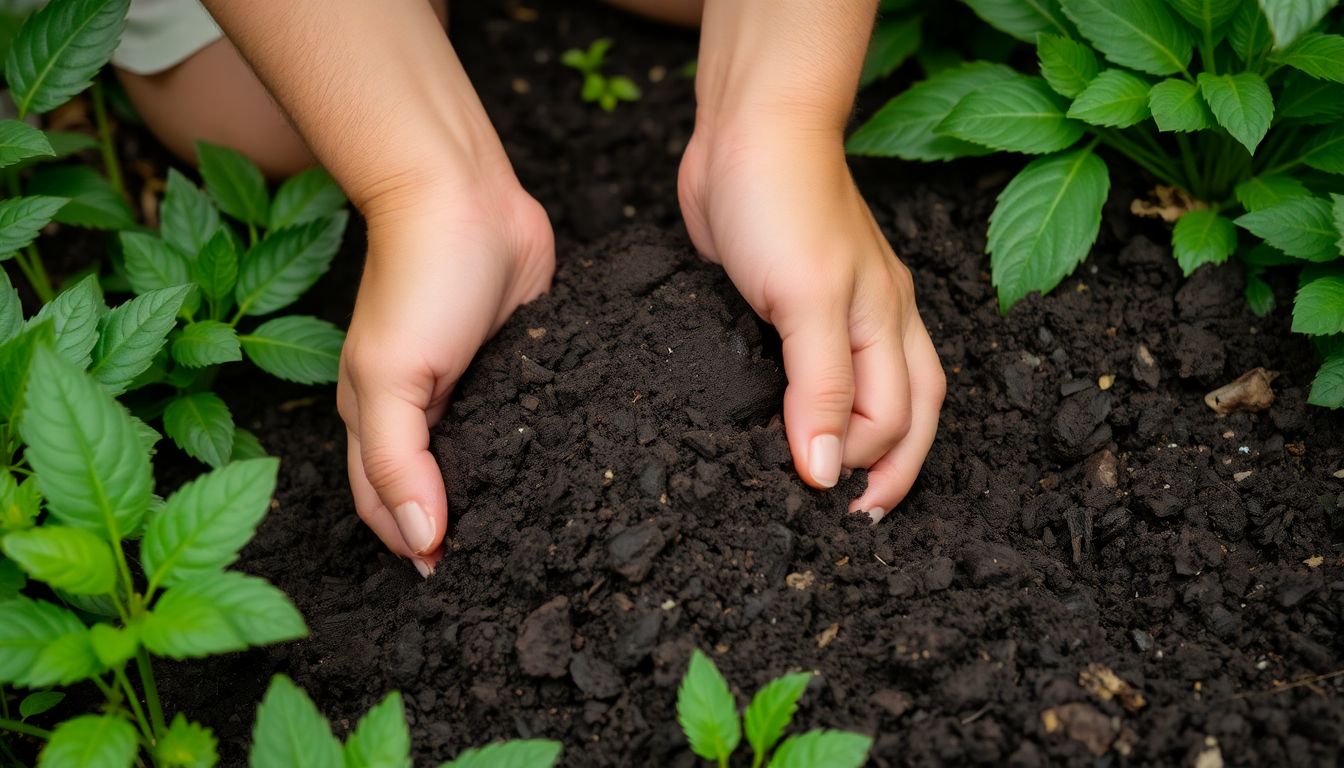
Soil Health: The Foundation of Your Garden
In the grand tapestry of survival gardening, soil health stands as the warp and weft, the very foundation upon which your garden’s prosperity is woven. The quality of your soil directly impacts the vitality of your plants, their resistance to diseases, and ultimately, your harvest’s abundance. Understanding and nurturing your soil is not just a gardening chore, but a symbiotic relationship that ensures the longevity and success of your garden.
The first step in this relationship is knowing your soil. Soil types vary greatly, from the sandy beaches of coastal regions to the rich, loamy plains of the Midwest. Sandy soils drain quickly, requiring frequent watering, while clay soils hold water like a sponge, often leading to root rot. The ideal soil, known as loam, is a balanced mix of sand, silt, and clay, with a healthy dose of organic matter. It drains well, yet retains moisture and nutrients.
Composting is the gardener’s secret weapon in the quest for healthy soil. It’s a natural process that transforms kitchen scraps and yard waste into a nutrient-rich, crumbly material that improves soil structure, increases its water retention, and boosts its fertility. By incorporating compost into your soil, you’re not just adding nutrients, you’re fostering a vibrant ecosystem of microorganisms that break down organic matter, cycle nutrients, and protect plants from diseases.
Organic methods to enrich and maintain soil fertility are numerous and varied. Cover cropping, also known as green manuring, involves planting cover crops like clover or rye in the off-season. These crops improve soil structure, prevent erosion, and add nutrients when tilled under. Crop rotation, another organic method, involves planting different crops in succession to prevent the depletion of specific nutrients and to confuse pests and diseases. Lastly, mulching with organic materials like straw or wood chips helps retain soil moisture, suppresses weeds, and adds organic matter as it breaks down.
In conclusion, soil health is not a destination, but a journey. It’s a journey of understanding, nurturing, and respecting the complex, living ecosystem beneath our feet. By embracing organic methods to enrich and maintain our soil, we’re not just growing gardens, we’re cultivating life.
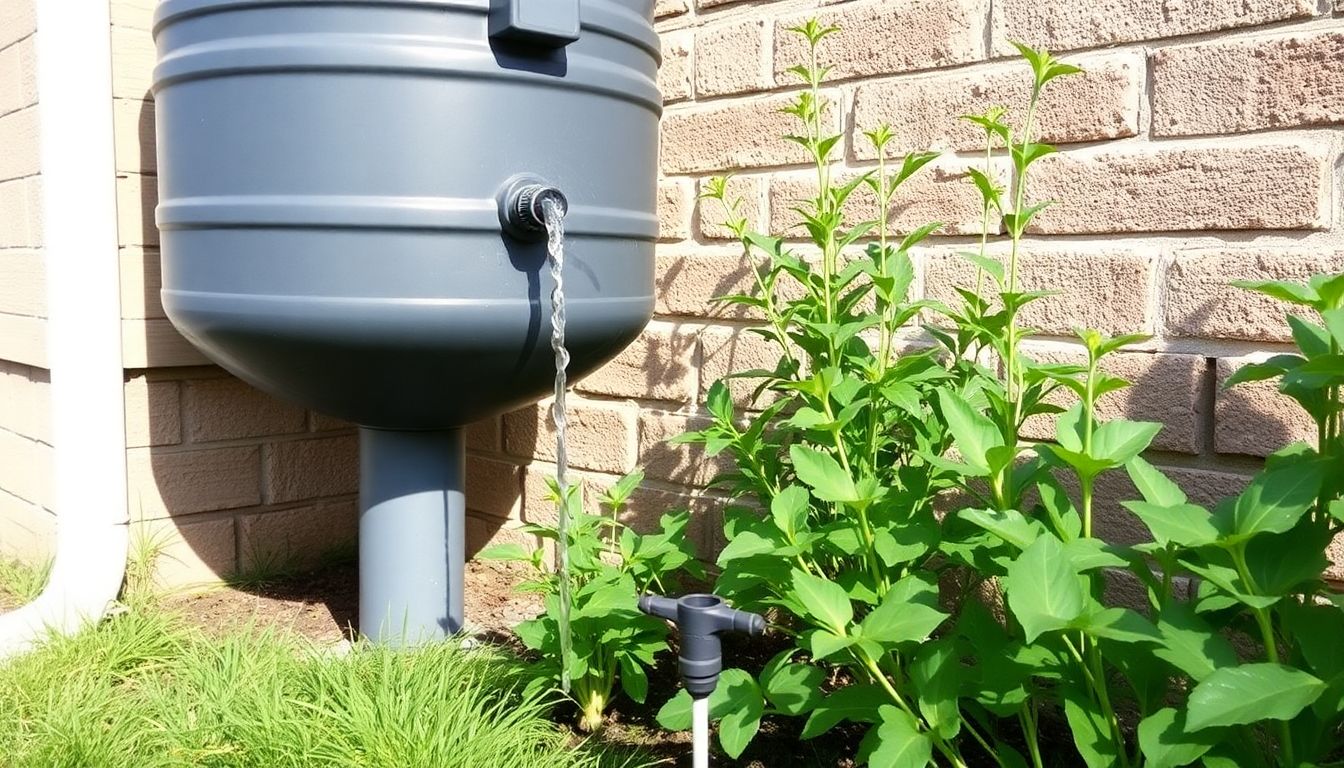
Water Management: Saving and Conserving
In the grand tapestry of sustainable living, water management plays a pivotal role. Imagine, if you will, a world where every drop counts, where the dance of water is not a wasteful waltz, but a harmonious symphony of conservation. Let us embark on this journey, exploring efficient watering techniques that whisper rather than shout, and methods that turn waste into want.First, let us consider the art of drip irrigation, a technique as elegant as it is effective. Picture a gentle drip, like a soft rainfall, nourishing the roots of your plants directly. This method ensures that water goes exactly where it’s needed, minimizing evaporation and maximizing efficiency. It’s like a private concert for your plants, a personalized hydration experience that saves up to 50% of the water used in traditional sprinkler systems.Next, let us turn our gaze to the heavens and the age-old practice of rainwater harvesting. This is not merely collecting water, but embracing the cycle of life. By installing a simple system to collect rainwater from your roof, you can store this precious resource for later use. It’s like saving a friend’s phone number, knowing you’ll need it someday. This water can then be used to quench the thirst of your plants, or even to flush your toilets, a double whammy of water conservation.Now, let us delve into the world of greywater, the water that has been used once, in your sinks, showers, and washing machines. It might not be pristine, but it’s far from useless. With a little filtration and treatment, this greywater can be recycled and used to water your plants. It’s like giving your plants a second-hand shirt, perfectly good, just a little worn. This practice can save up to 50% of the water used indoors.But our journey does not end here. We must also consider the plants themselves, the stars of our water-saving show. Some plants are thirstier than others, like the dramatic diva who demands center stage. So, it’s wise to choose plants that are native to your area, or drought-tolerant, like the humble yet resilient understudy. These plants require less water, less pampering, and less guilt.Lastly, let us not forget the power of good old-fashioned common sense. Mulching your garden, for instance, is like wrapping your plants in a cozy blanket. It slows down evaporation, keeping the soil moist for longer. And watering early in the morning or late in the evening, when the sun is less harsh, ensures that more water reaches the roots, and less is lost to evaporation. It’s like giving your plants a cool drink on a hot day, rather than a steaming cup of tea.In conclusion, water management is not about deprivation, but about balance. It’s about using what we have wisely, creatively, and sustainably. It’s about turning every drop into a dance, a symphony, a celebration of life. So, let us dance, let us celebrate, and let us save every drop.

Vertical Gardening: Maximizing Space
Vertical gardening, a practice that’s been gaining traction in urban spaces and small homes, is more than just a trend; it’s a smart, space-efficient way to bring nature indoors or outdoors. By growing plants vertically, we’re not only maximizing our space but also creating a unique, lush environment that’s both healthy for our plants and aesthetically pleasing.
The benefits of vertical gardening are manifold. Firstly, it’s a space-saving solution, perfect for those living in apartments or homes with limited garden space. By growing plants upwards instead of outwards, you can create a green oasis even in the smallest of spaces. Secondly, vertical gardening can improve plant health. Many plants, especially those that grow naturally on trees or cliffs, thrive in vertical environments. The improved air circulation and increased sunlight exposure can lead to healthier, more robust plants.
But vertical gardening isn’t just about functionality; it’s also about aesthetics. A well-designed vertical garden can transform a dull wall into a vibrant, living piece of art. The variety of textures, colors, and shapes that vertical gardens offer can create a stunning visual impact.
Creating your own vertical garden structures can be a fun and rewarding DIY project. Here are a few ideas to get you started:
- Pallet Gardens: Repurpose old pallets by attaching them to a wall or fence. Fill the gaps with soil and plant your favorite herbs, flowers, or vegetables.
- PVC Pipe Planters: Cut a PVC pipe into sections, fill them with soil, and poke holes for drainage. Hang them on a wall or fence using hooks or chains.
- Mason Jar Planters: Drill a few holes in the bottom of a mason jar for drainage, fill it with soil, and plant your chosen plant. Hang the jar using a chain or rope.
- Ladder Gardens: An old wooden ladder can be transformed into a beautiful vertical garden. Place pots on the steps and fill them with plants.
Remember, the key to successful vertical gardening is to choose the right plants for your space and to provide them with the right care. With a little creativity and effort, you can create a vertical garden that’s both beautiful and functional.
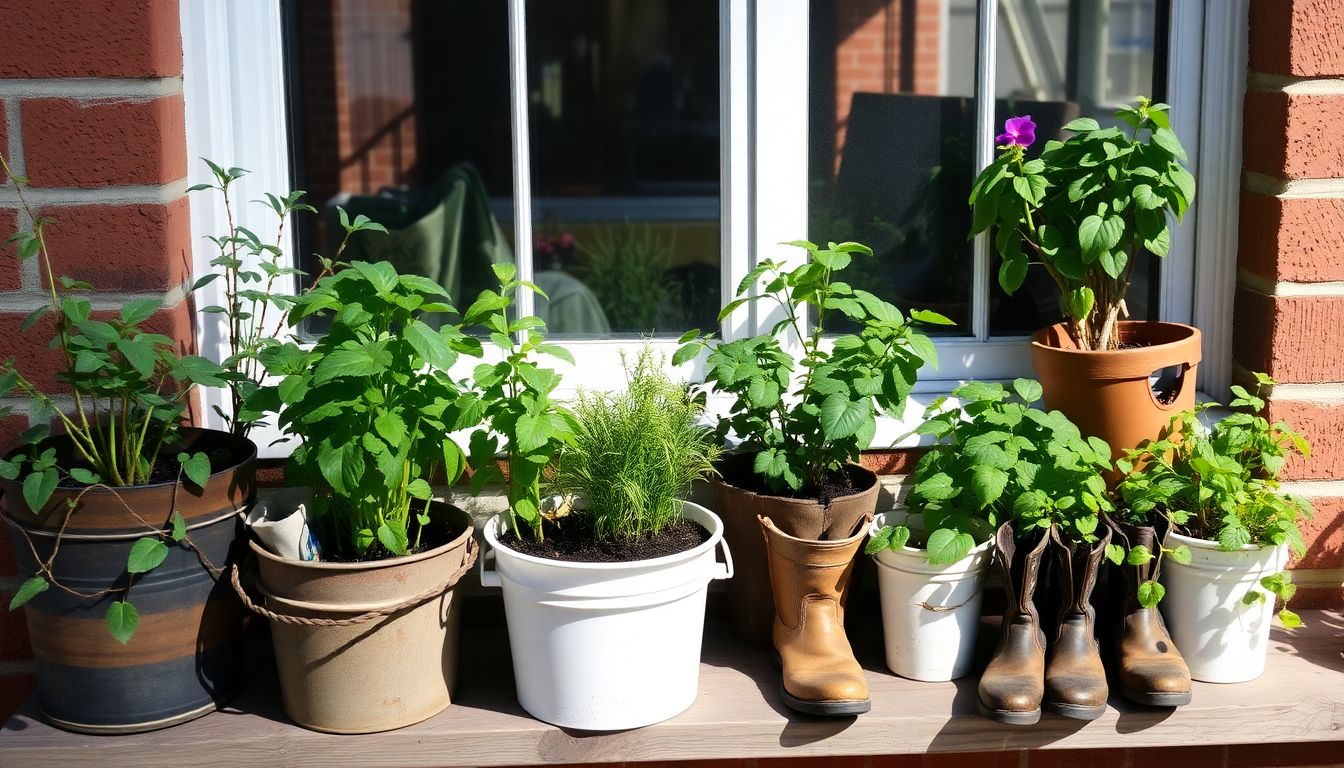
Container Gardening: Growing on the Go
Container gardening, a green thumb’s best friend for urban dwellers and nomads alike, offers a plethora of advantages that make it a popular choice among plant enthusiasts. The most compelling benefit is undoubtedly its portability. Whether you’re a renter moving from one apartment to another, or a traveler who loves to take their green companions along, container gardening allows you to uproot your plants without causing them any stress. This is particularly useful for those who live in climates with harsh winters, as you can simply move your containers indoors when the weather turns frosty.
Another advantage of container gardening is its ease of care. Containers allow you to control the soil quality, watering frequency, and sunlight exposure, making it easier to cater to the specific needs of your plants. This is especially beneficial for those new to gardening, as it provides a manageable space to learn and experiment. Moreover, containers can be placed on balconies, patios, or even windowsills, allowing you to create a green oasis even in the smallest of spaces.
Container gardening also exhibits remarkable adaptability to various climates. By selecting the right containers and plants, you can create a thriving garden in almost any environment. For instance, terracotta pots are ideal for hot, dry climates as they allow for better evaporation, while plastic pots are better suited for cooler climates as they retain heat and moisture. Similarly, choosing plants that are native to or adapted to your climate will ensure they thrive in your containers.
When it comes to selecting and maintaining containers, there are a few tips to keep in mind. Firstly, choose containers that are appropriate for the size of your plants. A general rule is to select a container that is at least twice as wide and just as deep as the plant’s root ball. Also, ensure your containers have drainage holes to prevent root rot.
For maintenance, regular watering is crucial, especially for plants in small containers as they dry out quicker. A good practice is to stick your finger about an inch into the soil; if it feels dry, it’s time to water. Additionally, repot your plants when they become root-bound, usually once a year, and fertilize them regularly to ensure they receive all the necessary nutrients.
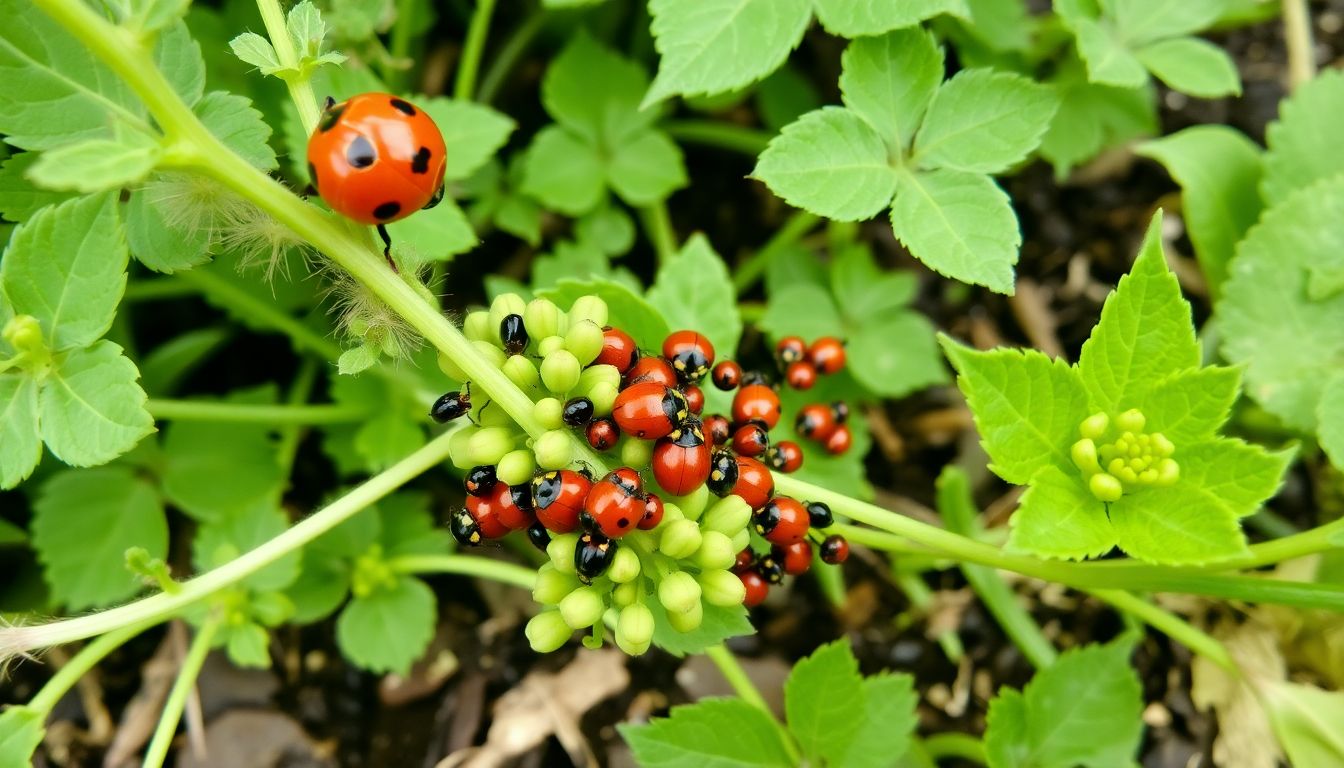
Pest Control: Natural and Organic Methods
In the grand orchestra of the garden, pests and diseases can often play the role of discordant notes, threatening the harmony of our plants. However, it’s crucial to remember that not all is lost when these uninvited guests arrive. The key to maintaining a balanced ecosystem lies in integrated pest management (IPM), a strategy that focuses on long-term prevention and control rather than immediate eradication. This approach is not only effective but also environmentally friendly, ensuring that our gardens remain safe havens for both people and wildlife.
At the heart of IPM is the understanding that pests and diseases are a natural part of the ecosystem. Instead of resorting to harmful chemicals, we can harness the power of nature itself to maintain balance. One such ally in our quest for a pest-free garden are beneficial insects. These tiny heroes, ranging from ladybugs to lacewings, feed on pests like aphids and mites, keeping their populations in check. Attracting and nurturing these insects can be as simple as planting flowers that provide nectar and pollen, creating a welcoming habitat that benefits both our plants and these miniature guardians.
Another organic method that plays a symphony of sorts in the garden is companion planting. This technique involves strategically placing plants together to create a mutually beneficial relationship. For instance, marigolds can deter nematodes from attacking nearby plants, while chives can repel aphids. By planting a diverse range of species, we can create a garden that is not only aesthetically pleasing but also resilient to pests and diseases. Moreover, this approach fosters biodiversity, attracting a variety of beneficial insects and promoting a healthy ecosystem.
In conclusion, the battle against pests and diseases need not be a war of attrition. By embracing integrated pest management and organic methods, we can cultivate a garden that is not only beautiful but also sustainable and harmonious. So, let’s roll up our sleeves, get our hands dirty, and tend to our gardens with care, knowing that every action we take contributes to the health and vitality of our green spaces.
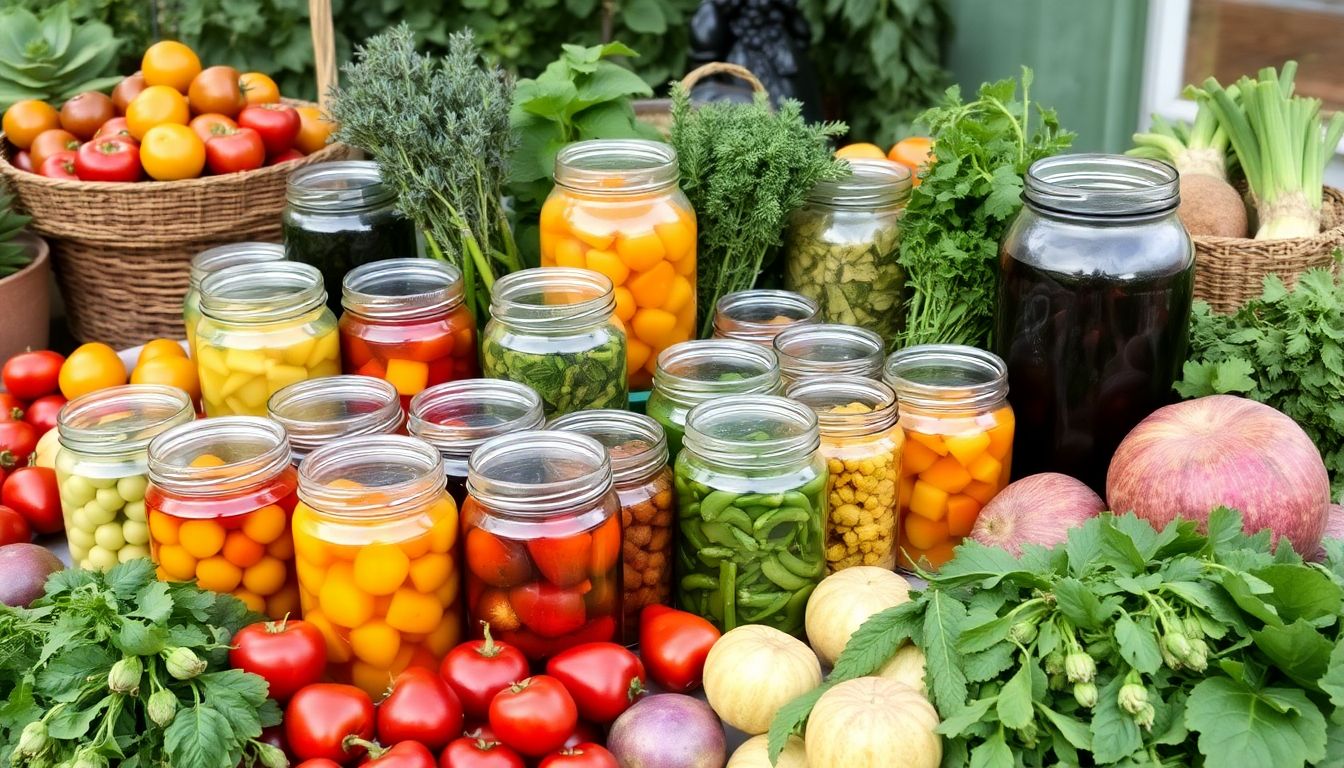
Harvesting and Preserving Your Bounty
As the sun begins to set on another bountiful summer, it’s time to reap the rewards of your labor and harvest the fruits (and vegetables) of your garden. But what to do with all that produce? Preserving your garden’s bounty is not only a great way to extend the life of your crops, but also a fun and rewarding process. Let’s dive into some popular methods: canning, fermenting, dehydrating, and freezing.
Canning is a time-honored tradition that allows you to capture the peak flavor of your garden’s produce. It’s perfect for high-acid foods like fruits and tomatoes. The process involves heating food in sealed jars to kill bacteria and create a vacuum seal. This preserves food at room temperature for up to a year. There are two main types of canning: water bath canning and pressure canning. Water bath canning is suitable for high-acid foods, while pressure canning is necessary for low-acid foods like meats and vegetables.
Fermenting is another ancient method of preservation that’s gaining popularity today. It involves using beneficial bacteria to convert sugars into lactic acid, which preserves the food and creates a unique flavor. Fermented foods are not only delicious but also packed with probiotics that are great for gut health. You can ferment a wide range of vegetables, fruits, and even dairy products.
Dehydrating is a simple and energy-efficient way to preserve food. It works by removing moisture from food, which prevents bacterial growth. This method is ideal for fruits, vegetables, and herbs. You can use a dehydrator or even your oven to dry food. Once dehydrated, food can be stored at room temperature for up to a year.
Freezing is the easiest and fastest method of preservation. It’s perfect for preserving the texture and flavor of foods. It’s also the best method for preserving foods that don’t do well with other methods, like leafy greens. To freeze food, simply wash, prepare, and package it in freezer-safe containers. Most foods will keep for up to a year in the freezer.
Each preservation method has its benefits and best-suited foods. Canning is great for long-term storage, fermenting adds unique flavors, dehydrating is energy-efficient, and freezing is quick and easy. So, why not try them all and enjoy the bounty of your garden all year round?
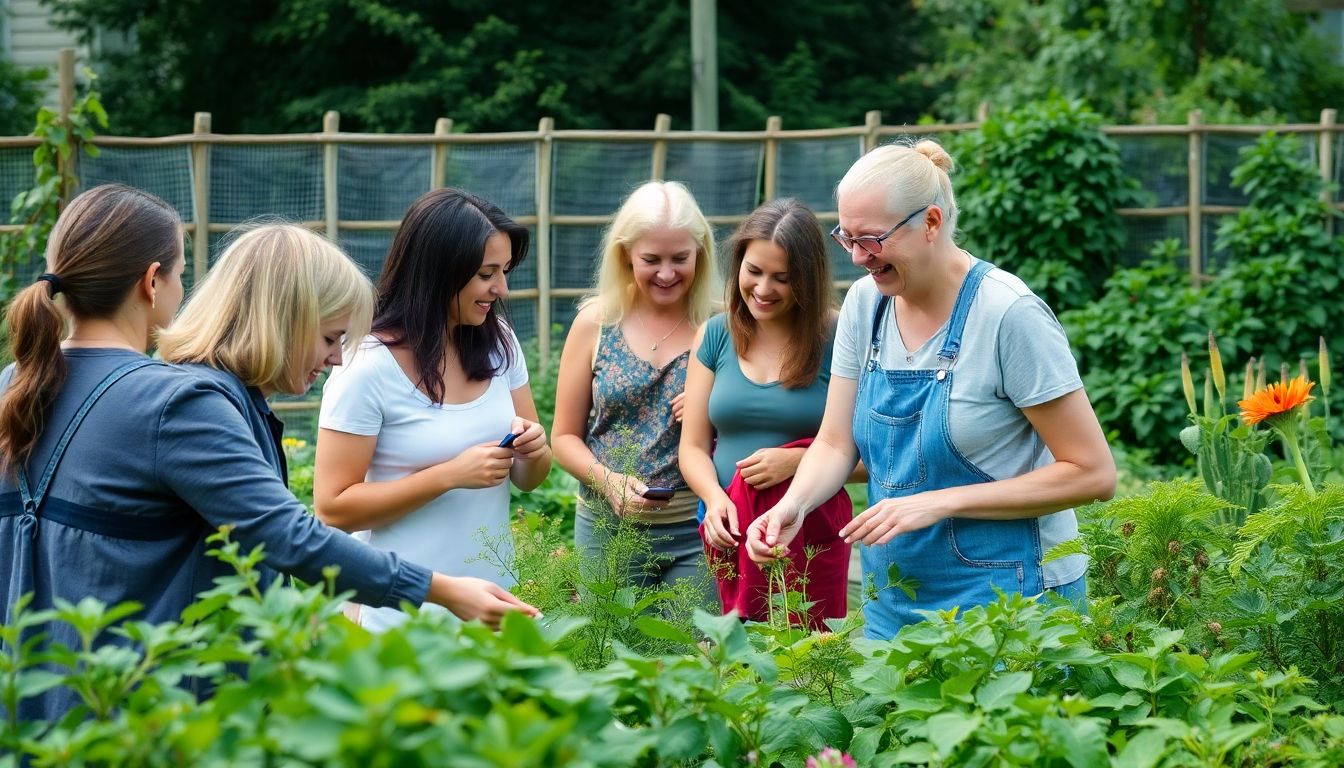
Community and Support: Building a Network
In the vast, green tapestry of survival gardening, one thread that weaves through and strengthens the entire fabric is the sense of community. This isn’t just a solitary pursuit; it’s a collective endeavor that thrives on shared knowledge, resources, and camaraderie. Let’s explore the importance of community in this rewarding journey.
Local gardening clubs are the lifeblood of this community. They are the physical manifestation of the phrase ‘many hands make light work.’ Here, gardeners of all stripes come together, from seasoned green thumbs to eager novices, to share their experiences, tips, and tricks. They organize group purchases of seeds and supplies, reducing costs for everyone. They plan and execute community gardens, transforming barren plots into vibrant, productive spaces. And they host workshops and seminars, inviting experts to share their wisdom. It’s a beautiful cycle of learning and growth.
Online forums are the digital equivalent of these clubs, offering a global perspective and 24/7 access. They are a treasure trove of information, where you can find answers to even the most peculiar gardening queries. Here, you can connect with gardeners from different climates, learning how to adapt your techniques to suit your unique environment. You can also join specialized groups focused on specific plants or methods, delving deep into the intricacies of your passion.
Seed swaps are another wonderful community initiative. They are like gardening’s version of a potluck, where gardeners bring their surplus seeds and exchange them with others. This not only saves money but also promotes biodiversity. It’s a tangible way to share resources and ensure that a wide variety of plants continue to thrive in our gardens and communities.
The benefits of this shared knowledge and resources are manifold. Firstly, it democratizes gardening, making it accessible to everyone, regardless of their experience or resources. Secondly, it fosters innovation. When gardeners share their successes and failures, they collectively advance the field. Lastly, it builds resilience. In times of crisis, a strong gardening community can provide a safety net, ensuring that no one goes without fresh, homegrown produce.
So, whether you’re a seasoned gardener or just starting out, remember that you’re not alone. There’s a whole community of green-fingered enthusiasts out there, ready to support and inspire you. So, let’s cultivate more than just plants; let’s cultivate community.
FAQ
What is survival gardening and how does it differ from regular gardening?
Why is it important to learn survival gardening?
What are some of the best crops for survival gardening?
- Potatoes and sweet potatoes, which are calorie-dense and store well.
- Legumes like beans and peas, which fix nitrogen in the soil and are high in protein.
- Leafy greens such as spinach and kale, which are packed with vitamins and grow quickly.
- Root vegetables like carrots, beets, and radishes, which store well and provide a variety of nutrients.
- Fruiting plants like tomatoes, peppers, and cucumbers, which produce abundant harvests with minimal effort.
How can I start a survival garden in a small space?
- Vertical gardening: Use trellises, cages, or walls to grow plants upwards, saving space on the ground.
- Container gardening: Grow plants in pots, barrels, or even old boots. Choose compact varieties and ensure they get enough sunlight and water.
- Intercropping: Plant fast-growing crops like lettuce or radishes alongside slower-growing ones like carrots or potatoes. The fast-growing crops will be harvested and replaced before the slower ones need the space.
- Use the square foot gardening method, which involves dividing your garden into small squares and planting a certain number of plants in each square, depending on the plant’s size.
What are some low-maintenance crops for survival gardening?
- Potatoes, which only need to be planted and hilled once or twice during the growing season.
- Sweet potatoes, which are drought-tolerant and require little care once established.
- Squash, which grows quickly and produces abundantly with minimal attention.
- Asparagus, which is a perennial that requires little care once established and provides harvests for up to 20 years.
- Rhubarb, another perennial that requires minimal care and provides a substantial harvest each year.
How can I preserve the food I grow to ensure a continuous supply?
- Canning: This involves heating food in sealed jars to kill bacteria and prevent spoilage. It’s ideal for high-acid foods like fruits and tomatoes.
- Freezing: Freezing is a simple and effective way to preserve food. It’s great for fruits, vegetables, and meats.
- Dehydrating: This involves removing moisture from food to prevent spoilage. It’s excellent for preserving fruits, vegetables, and meats, and it also concentrates flavors.
- Fermenting: Fermentation uses beneficial bacteria to preserve food and enhance its nutritional value. It’s great for making sauerkraut, kimchi, and fermented vegetables.
- Root cellaring: This involves storing root vegetables in a cool, dark, humid place to extend their shelf life.
How can I attract beneficial insects to my survival garden?
- Plant a variety of flowers: Beneficial insects are attracted to a wide range of flowers. Plant a mix of annuals and perennials to provide nectar and pollen throughout the growing season.
- Use native plants: Native plants are more likely to attract native beneficial insects, which have evolved with these plants over time.
- Provide shelter: Beneficial insects need places to lay their eggs and hide from predators. Planting dense shrubs and leaving some areas of your garden undisturbed can provide this shelter.
- Avoid pesticides: Pesticides can kill beneficial insects along with the pests they’re targeting. Instead, use organic methods to control pests and diseases.
- Install a birdbath or bird feeder: Birds can help control pests in your garden by eating insects and their larvae.
How can I improve the soil in my survival garden?
- Add organic matter: Adding compost, manure, or other organic materials to your soil improves its structure, increases its water-holding capacity, and adds nutrients.
- Rotate crops: Rotating crops helps prevent the depletion of nutrients in the soil and can help control pests and diseases.
- Cover crops: Planting cover crops like clover or rye in the off-season can improve soil structure, add nutrients, and prevent erosion.
- Test your soil: Conducting a soil test can help you determine what nutrients your soil is lacking and how to amend it accordingly.
- Avoid tilling: Tilling can disrupt the soil’s structure and damage beneficial microorganisms. Instead, use methods like no-till or lasagna gardening to build up your soil over time.
How can I adapt my survival garden to different climates?
- Choose climate-appropriate plants: Research which plants are well-suited to your climate and choose varieties that are known to thrive in your area.
- Provide protection: In cold climates, provide protection from frost with row covers, cold frames, or greenhouses. In hot climates, provide shade and ensure plants have enough water.
- Adapt watering: In dry climates, use water-saving techniques like drip irrigation or mulching. In wet climates, ensure your garden has good drainage to prevent waterlogging.
- Use season extenders: Techniques like succession planting, intercropping, and using season extenders like row covers or cold frames can help you grow crops year-round in mild climates.
- Observe your garden: Pay close attention to how your plants respond to the climate and adjust your care accordingly.



